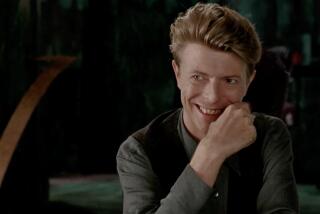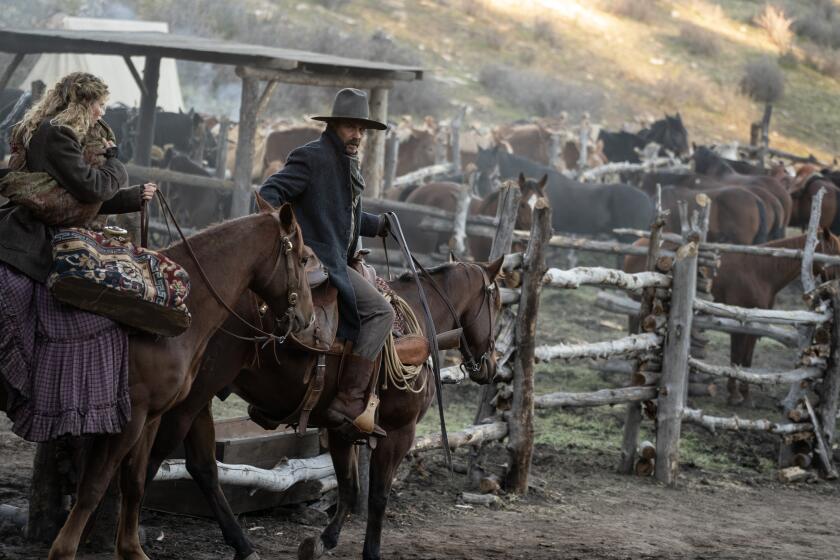‘Dogtooth’s’ enigmatic relevance
When it comes to finance, Greece’s reputation has been plummeting. Among moviegoers, however, the country’s stock may be on the rise.
Purposefully enigmatic and difficult to describe, the Greek export “Dogtooth,” directed and co-written by Yorgos Lanthimos, tells the story of a family that has largely cut itself off from the outside world. The father and mother do not allow their children beyond the walls of their small hilltop compound, teaching them a skewed dialect that mangles the meaning of certain words. The three children — one son, two daughters — appear to be in their late teens or early 20s but exist largely in a suspended state of innocence.
When the father brings in a woman from his work to sexually service his son, she brings along small but crucial outside influences — a glittered headband, a few videotapes — that create cracks in their carefully constructed world.
“People ask me if the film is about home schooling or if it’s political, about totalitarian states or the information we get from the media,” Lanthimos said recently by phone. “And of course all those things were not in our minds as we were making the film, but it was intentional to make the film so people can come in and have their own thoughts about it.”
“Dogtooth” won the Un Certain Regard section at the 2009 Cannes Film Festival, beating other titles including “Precious.” Having since appeared at numerous other festivals, “Dogtooth” will have its long-awaited Los Angeles debut as part of the fourth Los Angeles Greek Film Festival on Saturday. The film will be released in New York City on June 25 and distributor Kino International has plans to open the film in Los Angeles sometime later this summer.
Though the recent economic crisis in Greece happened well after the film had been finished, it is perhaps natural to want to retroactively look for fault lines, reading “Dogtooth” as a study of a power system in collapse. But that might not be the best way to watch the movie.
“‘Dogtooth’ is less about very specific things and more a kind of contemporary fable,” said Matt Bolish, program director with the LAGFF. “It’s about power and the abuse of power and the relationship between the abuser and the abused. And that transcends being a Greek film or an American film, an indie film or a studio film. These are things that are applicable across boundaries.”
Lanthimos even left most of the characters without names — the credits read simply “Father” or “Older Daughter” — and he felt confident that even with many things unexplained, the audience would stick with the film.
“That’s when you have to take a chance,” he said of his decision to favor ambiguity over clarity. “It’s much more important to me for the audience to be engaged and to think about things themselves. If they miss any information, I’m OK with that instead of explaining every little detail and telling everyone what they should be thinking and how exactly things are.”
Covering Coco
“Which film?”
Jan Kounen, director and co-writer of “ Coco Chanel & Igor Stravinsky,” which opens in theaters Friday, joked playfully when recently asked about another biopic involving the legendary fashion designer, director Anne Fontaine’s “Coco Before Chanel.” In truth, both productions were well aware of each other even before shooting began and even share an American distributor, Sony Pictures Classics.
Kounen’s film picks up in essence where Fontaine’s left off, so the films, though officially unaffiliated, are more complementary than competing. Based on the novel by Chris Greenhalgh, “Coco & Igor” opens with a re-creation of the 1913 Paris production of Stravinsky’s “The Rite of Spring,” among the most notorious theatrical performances in the 20th century. From there the film leaps forward to 1920, when the successful Coco (played by Chanel model Anna Mouglalis) takes in the struggling Stravinsky (Danish actor Mads Mikkelsen) and his family at her country villa.
While the affair between Chanel and Stravinsky is widely acknowledged, not much is known about the details of their relationship. So scenes of their private exchanges are largely an extrapolation by the filmmakers and the actors.
“When they’re alone, that intimacy, of course you invent it,” said Kounen, “but you do it based on what you know of the characters…. It’s partly a story about big egos fighting, and that we know about, their ideas, their work. So based on that you define the characters and follow their human dilemmas.”
Perhaps the most surprising thing in “Coco Chanel & Igor Stravinsky” is that it makes no concessions to portray either of its main characters, titans in their fields, as particularly appealing, allowing them both to come off as strong-willed, difficult and uncompromising.
“Some people saw it as a reproach; they wanted more romance,” said Kounen. “But the characters were like that, and it’s interesting to see the fragility of somebody who is very strong. It’s not romantic, but it’s beautiful. They understand each other, and are fascinated by the different worlds the other is living in. It’s not the romantic story of the 20th century, but there is something really passionate between them.”
More to Read
Only good movies
Get the Indie Focus newsletter, Mark Olsen's weekly guide to the world of cinema.
You may occasionally receive promotional content from the Los Angeles Times.











